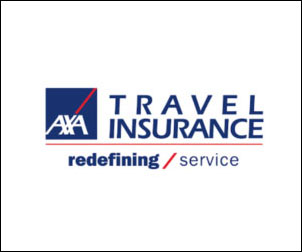Hokkaido, Japan: Travel GuideExplore these highlights on Japan's second largest island. |
|  Hokkaido is Japan's second largest island and the least developed. A large part of its charm lies in its unspoilt landscape, which makes it hugely popular with hikers, cyclists and nature lovers. It's quickly gaining popularity as a tourist destination.
Weather/ when to go:
Winter can be severe in Hokkaido, with freezing temperatures, snow and even freezing seas being par for the course. While this might be unappealing for many tourists, it makes the island a great winter sports destination. On the flip side, summer is not as extreme as you can often expect in other parts of Japan thanks to low humidity.
Do & see:
Don't miss these highlights!
Daisetsu-zan National Park
At the bottom of Mount Daisetsu-zan, you'll find Soun Gorge. Surrounded by 100-meter cliffs, the gorge makes up the center of the national park. Millions of visitors flock here every year to sample the hot springs and spectacular views. Within the gorge are various waterfalls (including Ryusei-no-taki [Shooting Star Falls] and Ginga-no-taki [Milky Way Falls]) and rock formations (including Obako and Kobako). Moving from the Daisetsu-zan Soun-kyo Ropeway to the Kuro-dake Lift offers the opportunity to climb to 1,700m and take in stunning views of the area.
Shikotsu-Toya National Park
Hot springs are a big attraction here, as well as spectacular scenery. The Noboribetsu-onsen hot springs are a particular draw and are one of the most famous on the island. Its rated as one of the best hot springs in the world thanks to the array of quality minerals that it contains. In the northeastern part of the hot spring is Noboribetsu Primeval Forest, which has been given natural monument status. At Jigoku Valley (Hell Valley), yellow-gray volcanic gas escapes from the rock surface.
Hakodate City Area
In the southern part of Hokkaido, you'll find various scenic spots around the Hakodate City area. In particular, Mount Hakodate-yama (to the southwest of Hakodate) is a good opportunity to take in the surrounding area. Take a cable car up to the summit, which is 332m above sea level. The observatory offers picture-perfect views of Hakodate port and city, along with spectacular views of the Shimokita-hanto and Tsugaru-hanto peninsulas.
Mt E-san
On the Kameda-hanto Peninsula lies this active volcano, which is part of the Esan Prefectural Nature Park. Hundreds of species of alpine plants thrive on the crater but that's not all: The area offers brilliant panoramic views, extending as far as the Shimokita-hanto Peninsula in good weather. In early summer, the Esan Tsutsuji-matsuri Festival is held here.
Cape Nosappu
In the very east of the island, this peninsula offers the chance to be one of the first people in the world to see the sun rise. The oldest lighthouse in Hokkaido stands on the tip and dates back to 1872. A dominating presence is a tall, white tower known as Heiwa-no-To (Tower of Peace) and climbing to the top of the 90m observation deck will be rewarded with 360 degree panoramic views. If the weather is good, expect to see as far as the islands of Kunashiri, Shikotan and Habomai. The area is largely rural but is dotted with lakes and marshes that are home to wild birds, including giant swans on Furen-ko Lake.
Shakotan-hanto Peninsula
In the western part of Hokkaido, this peninsula extends into the Sea of Japan. It can be easily explored via rental car (from Yoichi) or by seabed sightseeing boat (from Bikuni Port). The latter offers the chance to see beneath the waves via the underwater glass observation room. Here, you'll also find the Yoichi Space Museum -- dedicated to astronaut Mamoru Mori, who hails from the area -- complete with the opportunity to experience space shuttle travel for yourself courtesy of simulator.
The Floating Islands of Flowers
Explore nearby Rishiri-to and Rebun-to, two of Japan's most northern islands. You'll need a few days to see them in full but you can see the highlights in a day via the sightseeing buses. Spectacular flowers are in abundance between late April and mid-September. If you visit the area between November and February, be prepared for fairly strong winds and cooler temperatures, which can potentially mean that the ferry service is dropped. Mt Rishiri-zan offers panoramic views at the summit, plus a variety of unique alpine plants. Climbing routes are available but it's not the easiest climb to the summit. Cycling is popular on Rishiri-to, and renting a bike can be a great way to take in the views. On Rebun-to, Cape Sukoton and Cape Gorota are worth a visit, as well as the Momoiwa Observation Deck.
|
|
|
|

|

